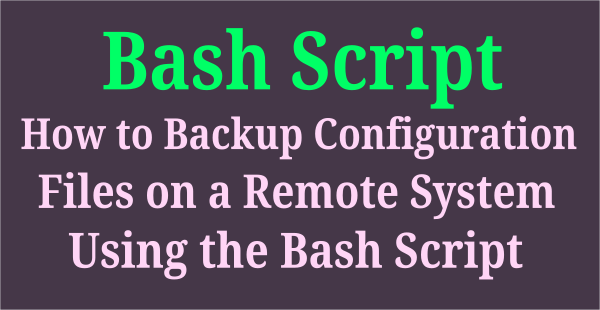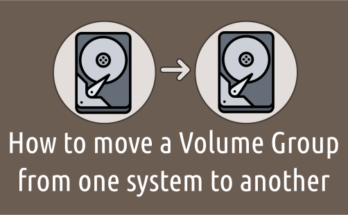If a password policy is pre-implemented in your organization, then there is no need to verify this, as locked accounts will auto-unlock according to the configuration.
However, manual unlock is needed for user accounts, if the lock period is set for longer duration.
This tutorial will show you how to manually lock and unlock user accounts in Linux.
Let’s understand the three ways to perform password lock & unlock by employing these two commands:
passwd:Used to update user’s authentication tokens & is achieved by calling the Linux-PAM and Libuser APIusermod:Used to modify/update (given) user’s account information & add a user to a specific group, etc.,
Let’s use the “daygeek” test user account to understand how this works:
Use the ‘id’ command to check if the given user is available in the system before locking or unlocking.
# id daygeek uid=2240(daygeek) gid=2243(daygeek) groups=2243(daygeek),2244(ladmin)
Method-1: How to lock, unlock and check status of the user account using passwd command?
The passwd command is one of the frequently used command by Linux administrator’s to update user’s authentication tokens in the /etc/shadow file.
Run the passwd command with the -l switch, to lock the given user account.
# passwd -l daygeek Locking password for user daygeek. passwd: Success
You can check the locked account status either by using passwd command or filter the given user name from ‘/etc/shadow’ file.
Checking the user account locked status using passwd command.
# passwd -S daygeek or # passwd --status daygeek daygeek LK 2019-05-30 7 90 7 -1 (Password locked.)
The above output will show few pieces of information about the status of the password for the given account. In our example the output is LK meaning the password is locked.
LK:Password lockedNP:No passwordPS:Password set
If the account is already locked, two exclamation marks will be prefixed to the user password at ‘/etc/shadow’ file.
# grep daygeek /etc/shadow daygeek:!!$6$tGvVUhEY$PIkpI43HPaEoRrNJSRpM3H0YWOsqTqXCxtER6rak5PMaAoyQohrXNB0YoFCmAuh406n8XOvBBldvMy9trmIV00:18047:7:90:7:::
Run the passwd command with the -u switch to unlock the given user account.
# passwd -u daygeek Unlocking password for user daygeek. passwd: Success
Method-2: Locking & Unlocking user account with usermod command
The ‘usermod’ command is often used by Linux administrator’s to modify a given user account information. It is primarily used to add a user to a specific group.
Run the usermod command with the -L switch to lock the given user account.
# usermod --lock daygeek or # usermod -L daygeek
Locked user account status can be verified using passwd command or filtering the user from the ‘/etc/shadow’ file because usermod command does not have that option.
Checking the user account locked status using passwd command.
# passwd -S daygeek or # passwd --status daygeek daygeek LK 2019-05-30 7 90 7 -1 (Password locked.)
Checking the user account locked status using /etc/shadow file.
# grep daygeek /etc/shadow
daygeek:!!$6$tGvVUhEY$PIkpI43HPaEoRrNJSRpM3H0YWOsqTqXCxtER6rak5PMaAoyQohrXNB0YoFCmAuh406n8XOvBBldvMy9trmIV00:18047:7:90:7:::
Run the usermod command with the -U switch to unlock the given user account.
# usermod --unlock daygeek or # usermod -U daygeek
Method-3: Enable and Disable SSH access for user in Linux
Alternatively, a user account can be locked by assigning the nologin shell to the given user. Once the user account is disabled, you will not be able to access the Linux system via SSH until the user account is activated. Run the below command to disable the user account.
# usermod -s /sbin/nologin daygeek
User account locked status can be verified from the ‘/etc/shadow’ file.
# grep daygeek /etc/passwd daygeek:x:2240:2243::/home/daygeek:/sbin/nologin
We can activate the disabled user account by changing the old shell.
# usermod -s /bin/bash daygeek
Method-3(a): Changing the shell to /dev/null
‘/dev/null’ is a simple device which is implemented in software and not corresponding to any hardware device on the system.
dev/null looks empty when you read from it whereas data written to this device simply “disappear.”
User can be disabled by changing the shell to /dev/null as shown below.
# usermod -s /dev/null daygeek
It can be reversed by changing the shell back to the default shell of the user.
# usermod -s /bin/bash daygeek
Method-3(b): Changing the shell to false
‘/bin/false’ is just a binary that immediately exits, returning false, when it’s called. The user logs in and immediately sees the login prompt again.
Alternatively, User can be disabled by changing the shell to /bin/false as shown below.
# usermod -s /bin/false daygeek
It can be reversed by changing the shell back to the default shell of the user.
# usermod -s /bin/bash daygeek
Method-4: Locking & unlocking users with chage command
The ‘chage’ command is used to view and modify user password expiration information. It can be used to lock and unlock user accounts.
Set the expiration date to ‘0’ to lock user account with chage command as shown below.
# chage -E0 daygeek
When you set the expiration date to ‘0’, which means that the account expires a day after January 1, 1970. Please check the following output for details.
# chage -l daygeek Last password change : Jan 07, 2021 Password expires : never Password inactive : never Account expires : Jan 02, 1970 Minimum number of days between password change : 0 Maximum number of days between password change : 99999 Number of days of warning before password expires : 7
To reverse this change, run the following command.
# chage -E -1 daygeek
Conclusion
In this tutorial, you learned multiple ways to lock & unlock users account on Linux.
If you have any questions or feedback, please leave a comment below.




How do I remove the error “Authentication token manipulation error” and then make sure the account doesnt lock again due to no password change.
Hi,
I locked my linux pc and dont remeber the password i can enter via guest session but cant see my data from there, As i have Windows connected virtually in that linux so i need linux password to unlock it.
The forgotten user password will need to be reset. Let us know which OS you are using and we can suggest the best way to fix it.